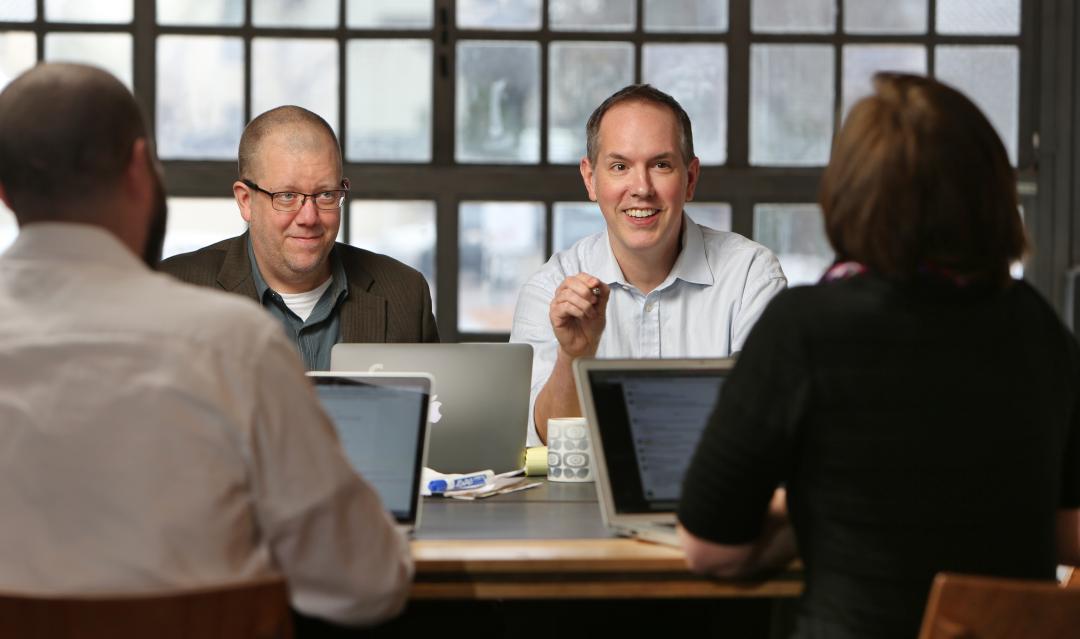Strategic Planning
The first phase of any project is strategy and planning. We get to know your audience, explore technical options, and help define your project goals and outcomes. Our team begins each project with a strategic discovery process, defining the way towards the best possible outcome.
Strategic tasks include:
- UX and usability research
- Content strategy
- Analytics review
- Defining goals and KPIs
- Technical assessment
- Information architecture
- Strategic brief
Start with Planning
We strongly advocate beginning with a planning phase, where we can explore your digital strategy, define project goals, inventory content, and generate a clear roadmap for the design and development to follow. It’s important to review and test any existing project assumptions as well, from our perspective as web professionals and “outsiders” to your field.
This can sometimes be a relatively short, “lean” discovery process, while other projects require a more extensive process of research, planning and testing. We rely on your knowledge and expertise, but also allow time for our team to fully explore the best approach. We put in the time to fully understand your business and particular needs of your audience.
Tasks include:
- Business strategy: what are your goals and values, understanding what you do
- Personas: what do we know about your target audience
- UX and Usability: interactive exercises designed to define goals and outcomes
- User stories: what do users and editors need to do
- Stakeholder interviews: talking to actual site users
- Competitive analysis: what are comparable organizations doing online
Content Strategy
Content is at the heart of everything we do. Content strategy work begins during discovery and continues throughout the build process. Tasks include:
- Analytics: review current site analytics and content performance
- Vision: defining vision for the site, matching brand and mission to content
- Content inventory
- Gap analysis: what content is missing or underrepresented
- Goals: define primary page goals and calls to action
- Organize and manage copy deck
- Governance: who will manage content and what is the appropriate workflow
Information Architecture
We excel at taking complex site structures and content, and making it easier for your users. Building off our planning and discovery work (inventory, goals, personas, competitive analysis, etc.), we map your site architecture.
We’ll recommend improvements to how content is organized and provide your team with sitemaps of new menu structures and taxonomies. We always advocate for plain language and navigation that is consistent, easy to understand, and easy to access.
Technical Architecture
Before we begin to make design and development decisions, let’s spend some time planning and discussing our options. What type of features do you need? What are the content types, and how should they be constructed? Are there existing modules and libraries we can leverage to meet your needs?
Any time we spend planning is more time saved once we get to the next stages of your project. Bringing our developers early into the planning and content strategy discussions ensures a more tightly integrated process, and fewer surprises, as we move to the next project phases.
Strategic Brief
We complete the discovery process by producing a strategic brief. This document recaps the planning and discovery we’ve done and defines the goals and outcomes of a successful project.
As we move into the next project phases, and weeks or months pass by, it is easy to lose site of the original plan. The strategic brief exists to remind everyone of the master plan, and what problems we are trying to solve.
